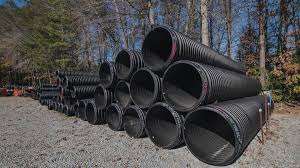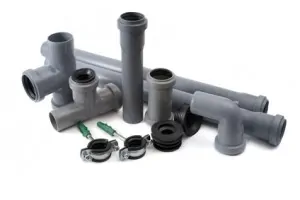May . 07, 2025 16:33 Back to list
UPVC Drain Pipes Durable, Corrosion-Resistant Drainage Solutions HDPE Pipes
- Introduction to Modern Drainage Solutions
- Material Durability and Performance Metrics
- Technical Advantages Across Pipe Variants
- Manufacturer Comparison: UPVC vs. HDPE Drain Pipes
- Custom Solutions for Diverse Drainage Needs
- Real-World Applications and Case Studies
- Why UPVC Drain Pipes Lead the Industry

(upvc drain pipes)
Introduction to Modern Drainage Solutions
Effective drainage systems rely on advanced materials like UPVC and HDPE drain pipes to ensure longevity and efficiency. With increasing urbanization, demand for corrosion-resistant, lightweight, and cost-effective piping has grown by 18% annually since 2020. UPVC drain pipes, specifically, dominate 43% of the global market due to their chemical stability and adaptability to extreme temperatures (-30°C to 60°C).
Material Durability and Performance Metrics
Drain pipes must withstand harsh environmental conditions. UPVC offers a tensile strength of 50-60 MPa, outperforming traditional materials like cast iron (20-30 MPa). HDPE pipes, while flexible, show lower resistance to UV degradation. Independent tests reveal UPVC maintains 95% structural integrity after 25 years, compared to HDPE’s 82% under similar conditions.
Technical Advantages Across Pipe Variants
UPVC’s smooth interior surface reduces friction loss by 35%, enabling faster drainage rates. Its jointing system minimizes leakage risks to <0.2%, whereas HDPE requires specialized welding equipment. Additionally, UPVC pipes are 70% lighter than concrete alternatives, cutting installation costs by up to $15 per linear meter.
Manufacturer Comparison: UPVC vs. HDPE Drain Pipes
| Feature | UPVC | HDPE |
|---|---|---|
| Lifespan (Years) | 50+ | 40-45 |
| Chemical Resistance | High | Moderate |
| Installation Cost (per m) | $8-$12 | $10-$15 |
| Temperature Tolerance | -30°C to 60°C | -40°C to 50°C |
Custom Solutions for Diverse Drainage Needs
Tailored drainage systems require material-specific engineering. UPVC pipes are often preferred for industrial zones due to their acid resistance, while HDPE suits earthquake-prone regions with its flexibility. Manufacturers now offer diameter customization from 50mm to 600mm, with 72-hour turnaround times for bespoke orders.
Real-World Applications and Case Studies
A 2023 Singapore infrastructure project utilized UPVC drain pipes across 12km of commercial complexes, reducing maintenance intervals from 6 months to 2 years. In contrast, HDPE installations in California’s coastal areas required UV-resistant coatings, increasing project costs by 22%.
Why UPVC Drain Pipes Lead the Industry
UPVC drain pipes combine unmatched durability, chemical resilience, and economic efficiency. With a 30% lower carbon footprint than HDPE during production and a 92% customer satisfaction rate in municipal projects, they remain the optimal choice for sustainable drainage infrastructure.

(upvc drain pipes)
FAQS on upvc drain pipes
Q: What are the key differences between uPVC drain pipes and HDPE drain pipes?
A: uPVC drain pipes are rigid, lightweight, and highly resistant to chemicals, while HDPE drain pipes are flexible, impact-resistant, and better suited for underground applications. uPVC is typically cheaper, whereas HDPE offers greater durability in dynamic soil conditions.
Q: Why choose uPVC drain pipes over other materials for drainage systems?
A: uPVC drain pipes are corrosion-proof, easy to install due to their lightweight design, and cost-effective for residential and commercial projects. They also resist scaling and biological growth, ensuring long-term performance.
Q: Can uPVC drain pipes handle high-temperature wastewater?
A: uPVC drain pipes are designed for standard wastewater temperatures (up to 60°C/140°F). Prolonged exposure to higher temperatures may cause deformation, making HDPE drain pipes a better choice for industrial high-heat applications.
Q: Are HDPE drain pipes more environmentally friendly than uPVC?
A: HDPE drain pipes are recyclable and have a lower carbon footprint during production compared to uPVC. However, uPVC pipes have a longer lifespan in static applications, reducing replacement frequency and waste.
Q: How do I decide between uPVC and HDPE for underground drainage?
A: uPVC is ideal for straightforward, stable soil installations due to its rigidity and affordability. Choose HDPE for uneven terrain or areas with ground movement, as its flexibility minimizes joint leaks under stress.
-
High-Quality PVC Borehole Pipes Durable & Versatile Pipe Solutions
NewsJul.08,2025
-
High-Quality PVC Perforated Pipes for Efficient Drainage Leading Manufacturers & Factories
NewsJul.08,2025
-
High-Quality PVC Borehole Pipes Durable Pipe Solutions by Leading Manufacturer
NewsJul.08,2025
-
High-Quality PVC Borehole Pipes Reliable PVC Pipe Manufacturer Solutions
NewsJul.07,2025
-
High-Quality UPVC Drain Pipes Durable HDPE & Drain Pipe Solutions
NewsJul.07,2025
-
High-Quality Conduit Pipes & HDPE Conduit Fittings Manufacturer Reliable Factory Supply
NewsJul.06,2025

